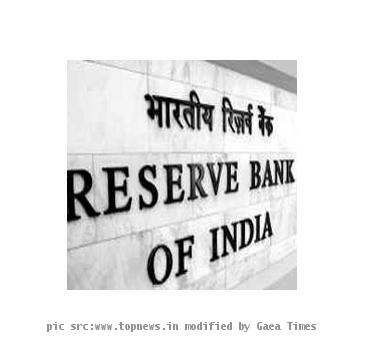|
The Reserve Bank of India has, today, placed on its website, the draft report (PublicationDraftReports.aspx?ID=592) on introduction of CDS for corporate bonds for public comments. Comments on the draft report may be forwarded to the Chief General Manager, Internal Debt Management Department, Reserve Bank of India, Central Office Building, 23rd floor, S.B. Road, Mumbai-400001 or emailed (mailto:cgmidmd@rbi.org.in?to=viveksingh@rbi.org.in) latest by October 4, 2010.
Background
Introduction of credit derivatives in India was actively examined in the past to provide the participants tools to manage credit risk. Draft guidelines on introduction of CDS were first issued in 2003 and then in 2007. However, taking into account the status of risk management practices then prevailing in the banking system and also the experiences relating to the financial crisis, the issuance of final guidelines was deferred.
The matter was since reviewed and the Second Quarter Review of Monetary Policy of 2009-10 proposed introduction of plain vanilla OTC single-name CDS for corporate bonds for resident entities subject to appropriate safeguards. It was proposed that to begin with, all CDS trades will be required to be reported to a centralised trade reporting platform and in due course they will be brought on to a central clearing platform.
An Internal Group comprising officials from various departments of the Reserve Bank was set up to finalise the operational framework for introduction of CDS in India. The Group has noted that the CDS market should be developed in a calibrated and orderly fashion with focus on real sector linkages and emphasis on creation of robust risk management architecture to deal with various risks as have been evident in the recent financial crisis.
The Internal Group, in consultation with market participants and after taking into account international experience in the working of CDS, has finalised the operational framework for introduction of CDS in India.
The recommendations of the Internal Group are:
-
The CDS shall be permitted only on corporate bonds as reference obligations and the reference entities shall be single legal resident entities.
-
While the reference entities are required to be rated, no minimum rating is stipulated. However, keeping in view the need for development of the infrastructure sector, CDS shall be permitted to be written on corporate bonds issued by Special Purpose Vehicle (SPV) of rated infrastructure companies.
-
The permitted participants have been categorised into :
-
Market Makers: Participants permitted to undertake both protection buying and protection selling, such as, commercial banks, non-banking financial companies, primary dealers, insurance companies and mutual funds, complying with the eligibility criteria and subject to the approval of their respective regulators;
-
Users: Participants permitted only to hedge their underlying exposures, such as, ccommercial banks, primary dealers, non-banking financial companies, mutual funds, insurance companies, housing finance companies, provident funds and listed corporates.
-
Users cannot purchase CDS without having the underlying exposure and the protection can be bought only to the extent (both in terms of quantum and tenor) of such underlying risk.
-
For users, physical settlement is mandatory. Market-makers can opt for any of the three settlement methods (physical, cash or auction settlement), provided the CDS documentation envisages such settlement.
-
As CDS markets are exposed to various risks, such as, sudden increases in credit spreads resulting in mark-to-market losses, high incidence of credit events, jump-to-default risk, basis risk, counterparty risks, etc., which are difficult to anticipate or measure accurately, market participants need to take these risks into account and build robust and appropriate risk management system to manage such risks.
-
The protection seller shall treat its exposure to the reference entity (on the protection sold) as its credit exposure and aggregate the same with other exposures to the reference entity for the purposes of determining single / group exposure limits. The protection buyer shall replace its original exposure to reference entity with that of the protection seller.
-
Standardisation of CDS contract has been proposed in terms of coupon payment dates/ maturity dates and coupons.
-
Fixed Income Money Markets and Derivatives Association of India (FIMMDA) in consultation with market participants and market bodies shall coordinate in the matters relating to documentation, disclosure of daily CDS curve for valuation and setting up of determination committees, etc.
-
A centralised CDS repository with reporting platform on the lines of the DTCC’s Trade Information Warehouse (TIW) would be set up for capturing transactions in CDS and it may be made mandatory for all CDS market-makers to report their CDS trades on the reporting platform within 30 minutes from the deal time.
-
While a gradual approach may be adopted for setting up a Central Counter Party (CCP) for guaranteed settlement of CDS transactions, to begin with, a system of non-guaranteed settlement may be set up.
Alpana Killawala
Chief General Manager
Press Release : 2010-2011/189
|

